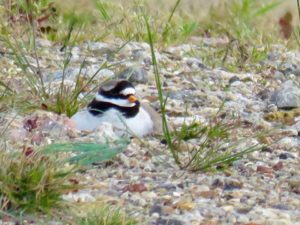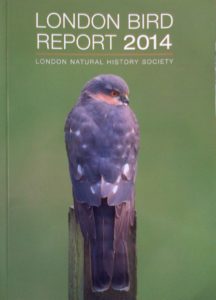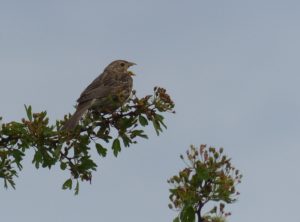The London Natural History Society’s team behind the annual London Bird Reports have been doing a grand job of catching up with themselves after things had fallen a few years adrift, and have recently mailed out the 2014 edition, which is free to members.
Of the London sites mentioned, Crossness and Crayford Marshes get frequent mentions, not surprising since they are the Borough’s top and best-watched locations.
On the species front, the following information is provided that may be of particular interest to Bexley wildlife people:
Corn Bunting – in trouble nationally and at risk of extinction as a breeding species in London. 16 sites and up to 10 territorial males. 3 breeding pairs reported from Crayford Marshes. Under threat in Bexley from Roxhill’s proposed railfreight depot scheme at Crayford Marshes.
House Martin – thought to still be in decline in the capital. A minimum of 200 confirmed or probable breeding records. The last one of the year for London was seen in Sidcup on November 25th. Few nesting sites in Bexley. Residents at the two larger ones destroy some nests on their houses, which at the very least least means an added time, energy and thus food-finding cost for the birds when they return from Africa in building new ones if, indeed, they can find somewhere suitable to do so.
Little Ringed Plover – around 60 were in the capital, with 16 pairs that bred or attempted to, with only the Crossness pair managing to fledge young. Under threat from Cory ‘Environmental’s’ proposed development on Borax fields.
Ringed Plover – recorded at 17 sites, with only a pair at Crossness known to have reared young. Two other pairs may have bred in London as a whole. Under threat from Cory ‘Environmental’s’ proposed development on Borax fields.

High power zoomed picture of Ringed Plover on its nest, taken from a safe distance outside a fence line. Note yellow bill with black tip. (Photo: Donna Zimmer)
Ring-necked Parakeet – the establishment of a night roost at Danson Park – as first reported here on ‘BW’ – is mentioned.
Skylark – in serious national decline. Around 200 breeding territories in the whole of London, with more than half at just seven locations. Breeding confirmed at 8 sites. Our south east sector of London, stretching out into Kent, had the fewest birds, with just 13 territories at 5 sites. The two main breeding sites in Bexley are under threat from Cory ‘Environmental’s’ proposed development on Borax fields and Roxhill’s railfreight depot scheme at Crayford Marshes.
Swift – A 56% decline from 1995 to 2013 is reported. No one had reported any breeding sites in Bexley for this year, though undoubtedly there were some.
There is also an interesting article on the Birds of the Warren, Bexleyheath, 1988-2014, by former Borough resident Andrew Waller. Of particular note are Bullfinch, which he first saw here in 1990, with a pair in January 1993. Andrew’s last record of it at this site was 31/5/1994. You would be hard-pressed to see any in the whole borough now. They do still seem to be resident at Braeburn Park. Lesser Spotted Woodpecker was first seen 11/9/1992 with the last one noted on 13/1/2001. Andrew reports that it bred here in some years. It has now vanished from Bexley and from most of London and is declining nationally.
To download/read Ralph Todd’s six-monthly Bexley Bird Reports (now available up to December 2015, next one due July 2016) go to http://www.bexleywildlife.org/bird-watching-bexley/
(Chris Rose)


